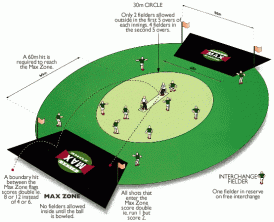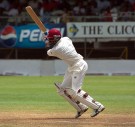That 90s Show
Divy Tripathi |
Decision Review System. X-Factor. Super Sub. Power Play. The Hundred. Power Surge. Twenty20. These innovations over the last twenty years and the changed preferences of the audience have turned cricket into something that was barely recognizable from the form in which it was played in the 90s and one can rest assured that it won’t look the same a decade or so in the future.
In fact, as we look back at the way cricket was back in the 90s it could be easy to say that the ‘experience’ of watching the game was so dissimilar to the present times that it could be equated to perhaps being in ‘Another Country’, the phrase taken from movie (1984) and play of the same name, signifying that a certain phase of life whether located in a particular time or physical location, has an independent existence and experience of its own. To make it relatable look back at events from your school or college lives, memories which can be remembered but never returned back to.
Cricket in the 90s can be looked back in a similar fashion, something so divorced from the present that to some it can look as if a ‘different’ sport was played back in the day. So, let’s take a look back keeping in mind things which were once deemed undetachable from the idea of cricket, but have since been discarded as the game has evolved.
- Tri-Series: The success of the Australian tri-series (inspired by the Kerry Packer years) was not without those envying its scale and festive atmosphere, and it was in the 90s that the potential of these One Day International carnivals was realized at a global scale. There were the Hero Cups, Centenary cups, Singer Trophies, Independence cups as nearly all the countries jumped into the tri-series bandwagon. This included England, who forsook the prim-and-proper Texaco Trophy affairs for the Natwest series featuring three sides.
However, it was in the non-test playing venues that the Tri-Series thrived the most and helped in spreading the game of cricket. Sharjah, Morocco, Nairobi, Singapore, Toronto etc. all had their iterations of Champions trophies, Cricket challenges which allowed the locals to be enthralled by some high-quality cricket. Tendulkar’s Desert Storm, the 1996-97 Carlton and United Series in Australia won by Pakistan, the close finals of 1997-98 Carlton and United Series between South Africa and Australia, England winning the Sharjah cup in 1997, the 1996 Singer World Series were a few examples of successful triangular tournaments from the time.
On the downside, some saw it as meaningless extensions in the cricketing calendar which contributed to player fatigue and injuries with no real incentive, unlike say the World Cups. Irrespective of the same they continued well into early 2000s, with several attempts made to recreate the magic of these tournaments even as recently as mid to late 2010s in Sri Lanka, Australia and West Indies but it seems that with the arrival of Twenty20 leagues and crammed international calendar one would find it tough for these tournaments to sprinkle around the world again, barring those already seen in associate cricket.
- Where have the minnows gone? The term ‘Minnow’ is used to signify the up-and-coming cricketing nations, who are yet to prove themselves on the international arena. While it is true that there are better opportunities present today such as the Twenty20 international status for all cricket playing nations, welcome addition of Afghanistan and Ireland to test ranks and an ODI league, it has done little to change the exclusionary nature of the game.
In the past, the opportunities given in the world cups, champions trophies and triangular series allowed the non-test playing nations a chance to take on the best, open doors to better opportunities and improve their cricketing skills. However, with the death of tri-series, trimming down of World tournaments and an international calendar biased against the associates, there is little opportunity for these sides to face up against the best.
In theory, they have their chance in the T20 World Cup but the fact remains that only the ‘best of the rest’ end up meeting the big guns in these tournaments. Even Afghanistan and Ireland have had little opportunity in the test arena, which is baffling given how little test match cricket the lower-ranked sides like Zimbabwe, Bangladesh play.
Contrast the present time to mid-90s leading up to mid-2000s, when minnows were able to pull off upsets against the likes of West Indies, Pakistan, Sri Lanka, Zimbabwe or someone like John Davison was able to light up the entire World cup with his scintillating batting. Sides like Kenya were able to fully utilize these opportunities and make a name for themselves at the world stage.
- Funky Jersey: While sides like Australia, New Zealand still bring out innovations in their Limited overs cricket jerseys, the majority of teams play cricket in one or two (In case of a separate Twenty20 jersey) uniforms. This is a far call from the colourful 90s, where nearly every ODI tournament had their own kits and some of these memorable ones remained with the fans.
The recent retro jersey tours in Australia (For New Zealand and India) seem to be a step in the right direction to give fans something different. - The Shorter Formats: Hong Kong Sixes, Super Max and Super 8s were the T10, T20 and The Hundred of the 90s. This shows how the broadcasters and boards have always been trying to work out ways to attract a broader audience. The need for products which could satisfy the cricketing needs in a few hours as compared to 7-8 hours of an ODI or five days of a test led to these innovations. There were yearly tournaments (Hong Kong Sixes), attempts to create an international series for some of them (Super 8s) and games added to international tours (Super Max games between Black Caps and tourists like England, India etc.) to push these formats. Despite the massive success of Hong Kong Sixes, which continued quite strongly in the early years of Twenty20 (losing the fizz only around recent years), these formats couldn’t quite take over.
Still there were several interesting aspects about these formats which are remembered fondly, like Batsmen retiring after reaching a particular score in Hong Kong Sixes, the ‘max zone’ and the two ten-over innings formula of Super Max. - All Stars Encounters: These encounters allowed the viewers to enjoy the best of players in a relaxed atmosphere. These games didn’t have an international status and were organized for a cause. It seems almost unreal today to find that most of the full-time players participated in these encounters. From the Tendulkar-De Silva special trumping Chanderpaul in 1998 in MCC vs Rest of the World encounter to Michael Bevan’s unreal knock for rest of the world XI vs Asia in 2000, these games will forever be etched in the memories of cricket fans.
Part of the 90s charm was the fact that even though there were a limited number of international sides, the difference between the good, mediocre and average wasn’t as pronounced as it might have been in any other cricketing period. This along with the fact that there was always some ODI tournament on the brink, allowed for a number of match-ups and rivalries to build up, the kind of which one won’t see today unless in a world cup or a test tour.





Leave a comment